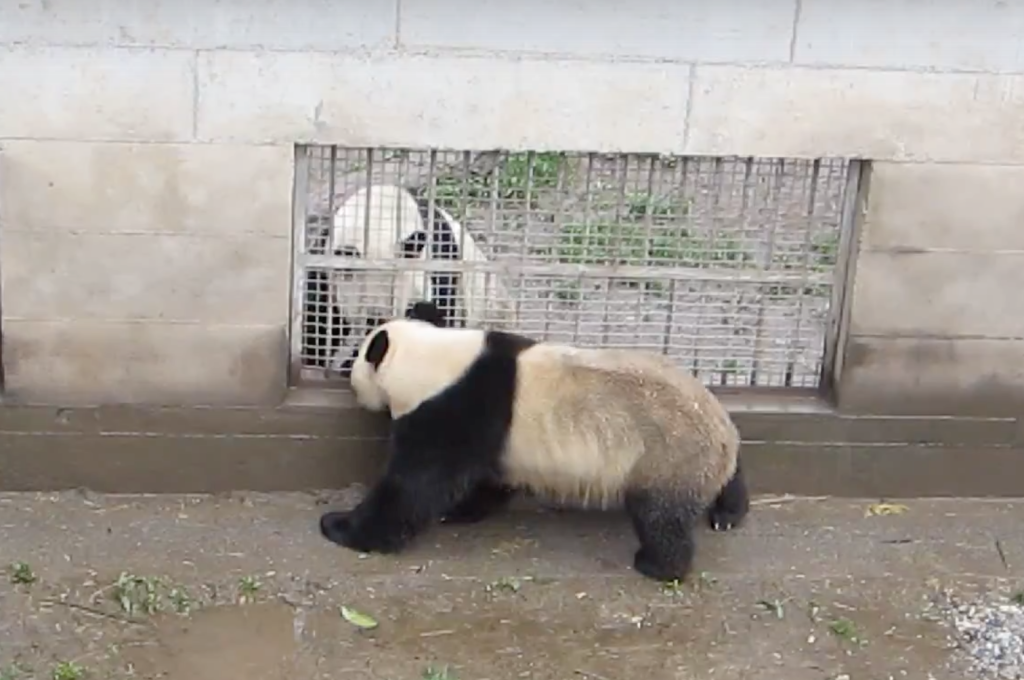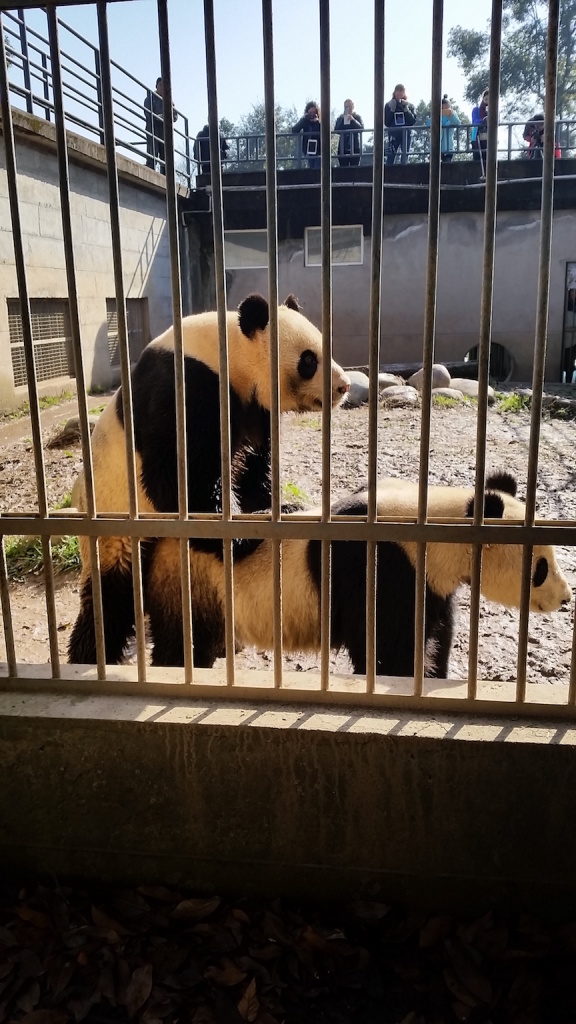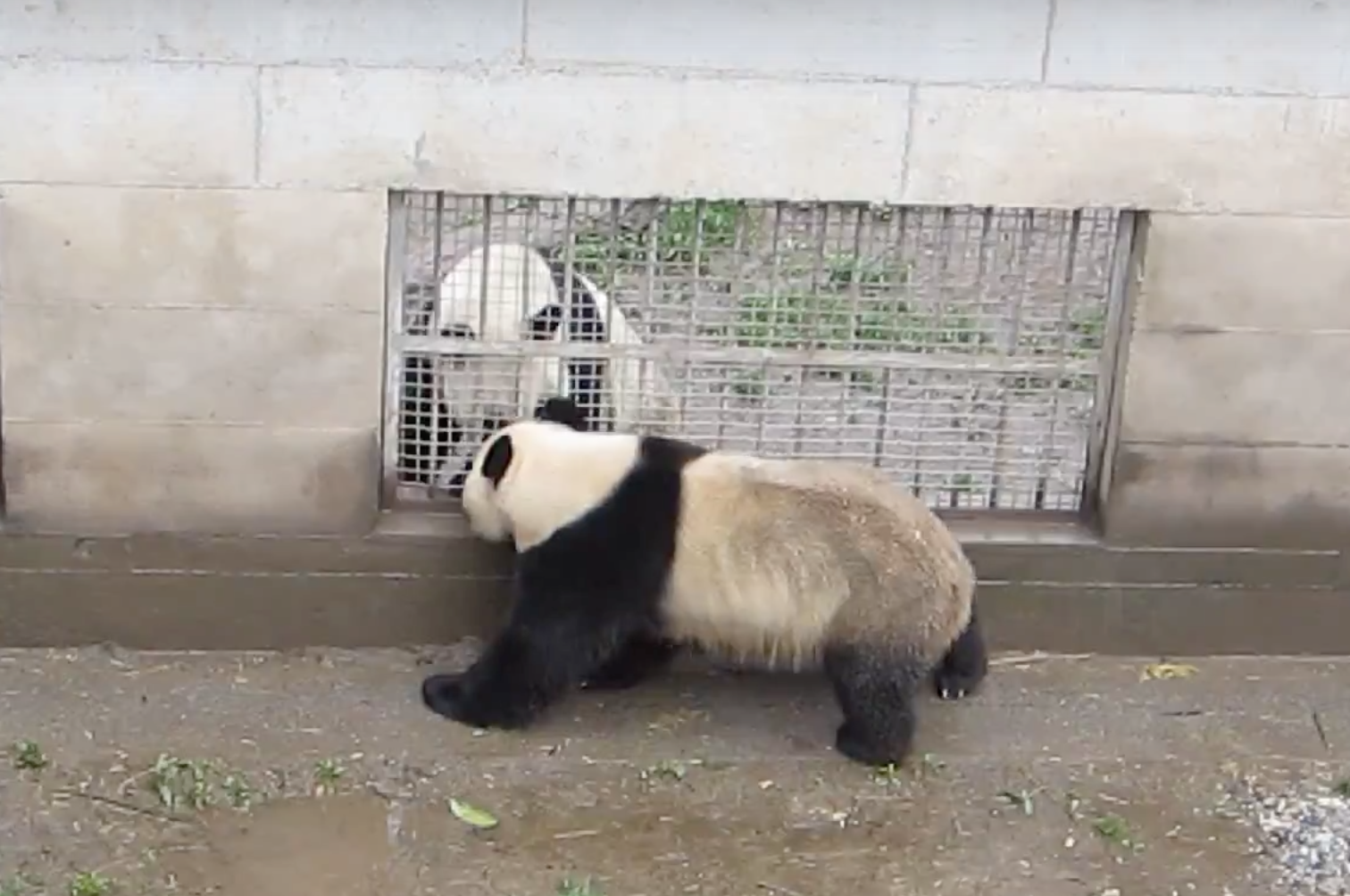
Wu Gang (closest) and Xiang Ge during our experimental male-male competition
Some of you may be wondering what we do over here besides having bamboo fights and hanging out with pandas all day. We are conducting research on the effects of male-male competition in giant pandas during breeding season. The enclosures are set up so that a female whose progestogen levels are rising (indicating she is close to estrus) is located between two males. Our experiment gives the males an opportunity to compete through a windowed barrier. We observe all three panda’s behaviors before and after the male-male competition. The hope is that because of the competition the males become more excited and interested in the female. In turn the males are more reproductively successful, leading to intromission success and a panda cub in 3-6 months!
We were very excited to observe our first male-male competition. The anticipation was high to see aggressive and territorial behavior, which is not usually seen from these bear cats. The first experiment centered on Hua Mei’s estrus with Wu Gang and Jin Ke competing. We moved Wu Gang over to be next to Jin Ke annndddd…..nothing! The bears were surprisingly calm and really just checked each other out, a little foot scraping (a territorial behavior) from Wu Gang, then they both went about their own business. When it came time to mate though, both males were successful!

Wu Gang and Hua Mei – successfully mated after Wu Gang was given male-male competition!!
We’ve observed a few more male-male competitions since then and have seen more of the competitive behaviors we were expecting. Between Wu Gang and Xiang Ge we observed some growling, foot scraping, barking, charging and more.
https://youtu.be/ASWI5pqN6SY
There were very similar behaviors observed between Lu Lu and An An with the addition of some very impressive chomps from Lu Lu.
https://www.youtube.com/watch?v=_ep45UJpLYk
These behaviors are very exciting but they don’t tell us everything. In addition to recording the behaviors on an ethogram we collect fecal samples from the males.

Jen collecting fecal samples, rain or shine.
These samples are analyzed to see if the male’s testosterone levels rise during a female’s estrus surrounding these male-male competitions like they do in males the wild.
Though sample sizes are too low right now to take a good guess at what results we may be seeing, we hope to get some good data and results from this breeding season. So far and have been able to arrange and observe many male-male competitions and matings and the season is barely half way through!
-Jenn


Very interesting–but the second video is private. Thanks!
I’ll fix right away! Thanks!
With regard to Wu Gang and Jin Ke, do you think that the calmness has to do with the respective ages of the pandas? Jin Ke is quite a bit younger than Wu Gang and as such may not be considered competition. Although, An An is younger than Lu Lu and it appears you witnessed competition. It will be very interesting to see the results of your study. Thank you for presenting the information. Always so much to think about.
Yes that’s what we were thinking – maybe Jin Ke knew that he shouldn’t challenge Wu Gang 🙂 – great observation. We’ll definitely take age, rearing, and previous mate experience into consideration when running our statistics.
Are you thinking this could be a reason why so few captive male pandas aren’t successful at mating? No competition?
Kathi, That’s our guess. The males are definitely that hard ones to get represented in captivity so we’re trying to trouble shoot what may be decreasing the motivation for some males and not others. Competition is an obvious starting point since they get a lot of competitive opportunities in the wild but get virtually none in captivity.